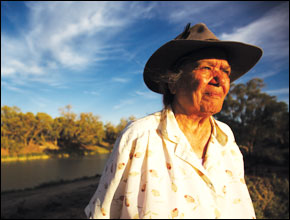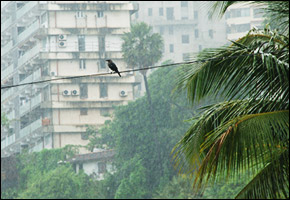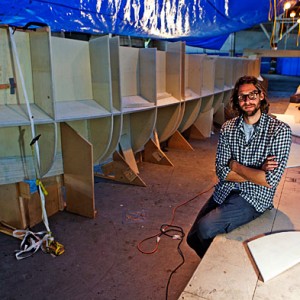Idea Central: Collaborative Solutions to SE Australia’s Water Crisis
 Software to Engage the Wisdom of Crowds
Software to Engage the Wisdom of Crowds
By Nadya Ivanova
Circle of Blue
Following publication of The Biggest Dry — a multimedia report on the dire drought in Australia’s Murray-Darling River Basin — Circle of Blue earlier this year developed Idea Central to use the latest software available to engage the public and develop collaborative solutions to the most significant example of climate-induced water scarcity in the industrialized world. Read the Report: Idea Central (PDF).
With the help of London- and Boston-based Imaginatik, a global technology company, Circle of Blue developed an online forum to tap into public wisdom on water. Over the course of eight weeks, nearly 300 people participated to suggest about 130 ideas that could help shape policy and improve water management practices in the Murray-Darling Basin, Australia’s primary food growing region.
Researchers, engineers, financial consultants, educators, policymakers and journalists from around the world exchanged ideas and considered existing solutions for farming, evaporation, water allocations and recycling, among others. More specific ideas referred to Australia’s topography, climate and political landscape.
“It is helping to concentrate many many minds on understanding this issue, first of all,” said Mark Turrell, CEO of Imaginatik, “but then it is also applying this brainpower creatively to bring the solutions to the table. I think that it is obviously important that more and more people realize this is an issue. And water is one of those where individuals can make a difference as well.” Idea Central is a joint project that invited the civic, academic and government communities from Australia and around the world to share ideas on how to rescue the Murray-Darling River Basin.
Idea Central was one of the first uses of networking software to facilitate collaboration on a specific facet of the global fresh water crisis, and the project prompted a number of useful solutions. Several challenged the public to look for alternatives to existing cropping and farm management practices.
“If we are considering planting trees, digging wells, transporting seawater, desalination, we should think of all the consequences and actively try to think of ways in which these actions could make the situation worse.”
One idea suggested the use of anti-ideation – a creative approach that actively brainstorms ways to aggravate a certain problem and then seeks actions to avoid these scenarios. Used in massive engineering projects, anti-ideation asks specific instead of open-ended questions in order to understand the issues better and prevent failure.
“The same approach should be applied to the solutions that come out of this campaign,” wrote Mark Burnett, head of IT Strategy & Transformation at BearingPoint and one of Idea Central’s most active participants. “If we are considering planting trees, digging wells, transporting seawater, desalination, we should think of all the consequences and actively try to think of ways in which these actions could make the situation worse.”
Idea Central also revealed the challenge of finding feasible, smart solutions to water issues, and, in turn, translating these public ideas into policy-shaping actions.
“Part of the point of ideation events is that they drive creativity by allowing injection of all sorts of ideas from ‘outside the box’,” Burnett told Circle of Blue, “however, if the expertise that is available inside the box is not used to temper and refine these ideas, and provide feedback on the relevance and practicality, then it’s just a lot of people throwing ideas around; you will never get solutions or results.
Read more about the project here: Responding to Australia’s water crisis: Idea Central (PDF).
, a Bulgaria native, is a Chicago-based reporter for Circle of Blue. She co-writes The Stream, a daily digest of international water news trends.
Interests: Europe, China, Environmental Policy, International Security.









Peter Gleick recently wrote a story in “Circle of Blue” on using waterbag technology to deliver water following emergency events, such as after the South Asia tsunami. Go to YouTube and insert the words, “Spragg Bag” in the selection box to see a video of the television news coverage from a demonstration of this technology in Washington State, and visit http://www.waterbag.com to see photos and other information. South Australia MP Liz Penfold has given two speeches in the South Australia Parliment on using waterbag technology to help augment the lakes in the lower Murray Darling River. A demonstration of waterbag technology in Australia from Tasmania to South Australia, at no cost to the government, has been presented to the Australian government for review. MP Penfold is awaiting a response.